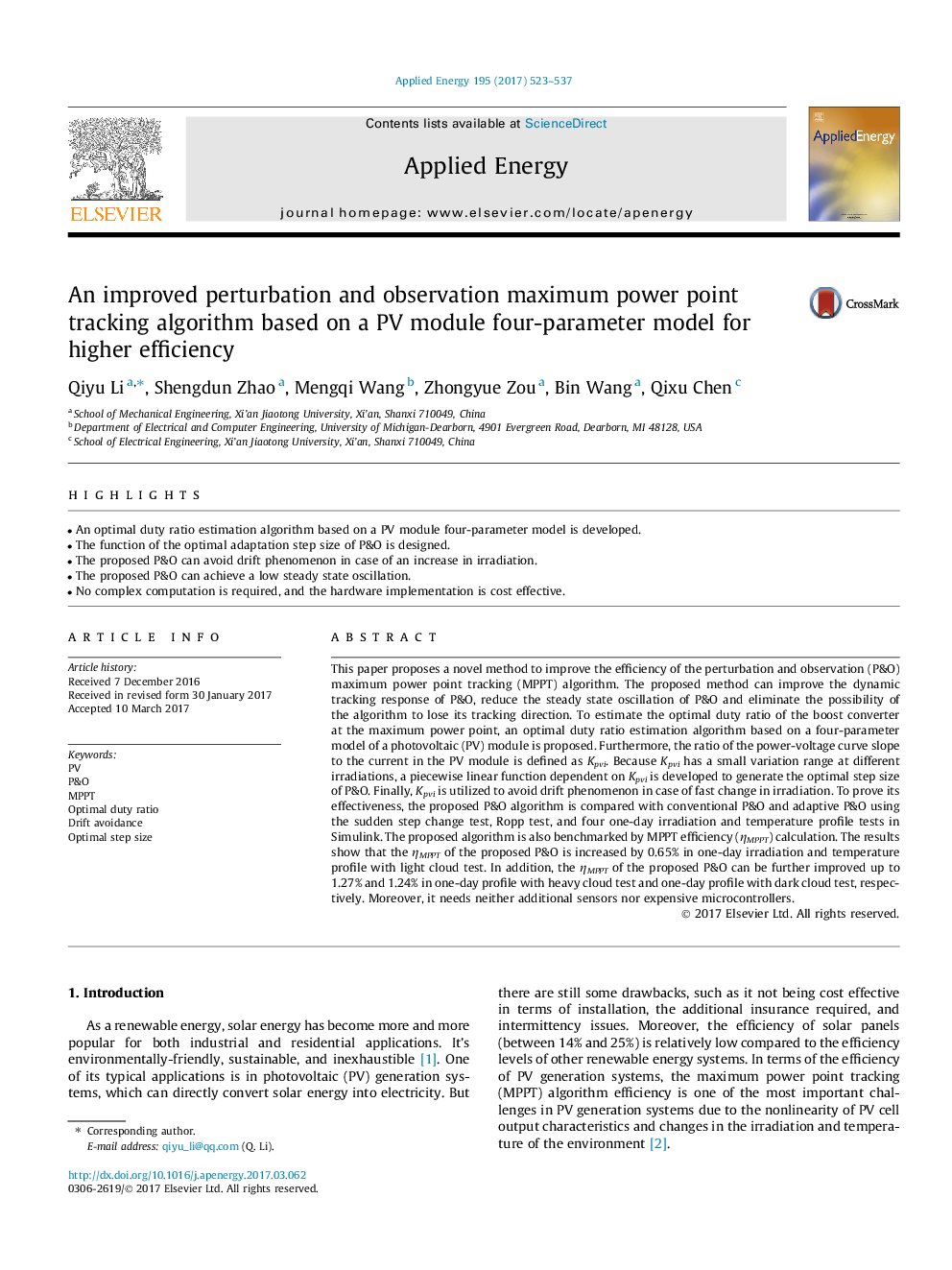| کد مقاله | کد نشریه | سال انتشار | مقاله انگلیسی | نسخه تمام متن |
|---|---|---|---|---|
| 4916501 | 1428095 | 2017 | 15 صفحه PDF | دانلود رایگان |
عنوان انگلیسی مقاله ISI
An improved perturbation and observation maximum power point tracking algorithm based on a PV module four-parameter model for higher efficiency
دانلود مقاله + سفارش ترجمه
دانلود مقاله ISI انگلیسی
رایگان برای ایرانیان
موضوعات مرتبط
مهندسی و علوم پایه
مهندسی انرژی
مهندسی انرژی و فناوری های برق
پیش نمایش صفحه اول مقاله

چکیده انگلیسی
This paper proposes a novel method to improve the efficiency of the perturbation and observation (P&O) maximum power point tracking (MPPT) algorithm. The proposed method can improve the dynamic tracking response of P&O, reduce the steady state oscillation of P&O and eliminate the possibility of the algorithm to lose its tracking direction. To estimate the optimal duty ratio of the boost converter at the maximum power point, an optimal duty ratio estimation algorithm based on a four-parameter model of a photovoltaic (PV) module is proposed. Furthermore, the ratio of the power-voltage curve slope to the current in the PV module is defined as Kpvi. Because Kpvi has a small variation range at different irradiations, a piecewise linear function dependent on Kpvi is developed to generate the optimal step size of P&O. Finally, Kpvi is utilized to avoid drift phenomenon in case of fast change in irradiation. To prove its effectiveness, the proposed P&O algorithm is compared with conventional P&O and adaptive P&O using the sudden step change test, Ropp test, and four one-day irradiation and temperature profile tests in Simulink. The proposed algorithm is also benchmarked by MPPT efficiency (ηMPPT) calculation. The results show that the ηMPPT of the proposed P&O is increased by 0.65% in one-day irradiation and temperature profile with light cloud test. In addition, the ηMPPT of the proposed P&O can be further improved up to 1.27% and 1.24% in one-day profile with heavy cloud test and one-day profile with dark cloud test, respectively. Moreover, it needs neither additional sensors nor expensive microcontrollers.
ناشر
Database: Elsevier - ScienceDirect (ساینس دایرکت)
Journal: Applied Energy - Volume 195, 1 June 2017, Pages 523-537
Journal: Applied Energy - Volume 195, 1 June 2017, Pages 523-537
نویسندگان
Qiyu Li, Shengdun Zhao, Mengqi Wang, Zhongyue Zou, Bin Wang, Qixu Chen,